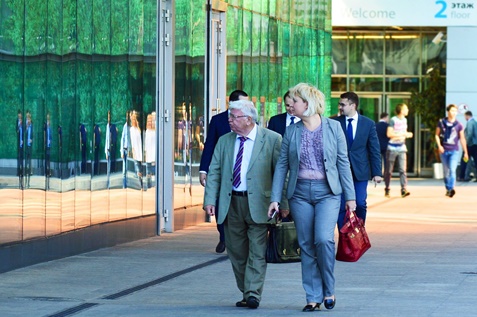In your average office building, you’ll find that the majority of the workers have a common eight-hour work shift, with a few breaks in between. These breaks are in place for workers to “refresh” themselves and relax for 20-30 minutes before cracking down and getting back to work.
However, what if an eight-hour workday wasn’t as effective as we might think, and what if six-hour workdays were proven to be just as effective and hold more productivity than an eight-hour workday?
In fact, this is the case. In Sweden, they have tested and implemented six-hour workdays to their businesses, which they believe to be just as effective as an eight-hour workday due to people workers being happier and more energetic, and therefore just as productive as before.
Reasoning Behind a Six-Hour Workday
The reasoning behind having a six-hour workday in place, as briefly mentioned above, isn’t only to increase the productivity of a workplace, but also is a great way for employers to give their workers more time to spend on their personal lives, and furthermore, get more out of their lives. There are benefits to this for both employees and employers.
Benefits for Employees
As a worker, it can be difficult to work all day and come home exhausted, not getting much done. However, with a six-hour workday implemented, those few extra hours allow workers to enjoy their personal lives more and even better enjoy their job due to a shorter shift.
Benefits for Employers
For a lot of workplaces, regardless of whether the key staff team is working, a lot of the facilities will still be working. By this, we mean that the lighting will still be on, air conditioning or heating system will still be on, etc. While the key staff team isn’t in the workplace working, there is still staff entering the building throughout the day (e.g. janitors, cleaners, management).
So, why is it more beneficial for employers to implement a six-hour workday? If a worker is happier, they are bound to be more productive. A shorter workday will increase employee happiness. Given that the main workplace facilities will still be functioning regardless of whether or not the key staff team is working, there isn’t much of a downside to implementing a six-hour workday.
“Morning Energy” Phase
In the morning, it can take us a long time to wake up and stop rubbing our eyes. By the time we make it into our workplaces and sit down with a cup of coffee, we feel ready to take on the world and spend a good few hours cracking down on our work. Although, after those few hours of pure hard work, the tiredness, that we thought we had rid ourselves of, comes back.
“Procrastination” Phase
For a lot of people, procrastination is an issue. They will slowly work up to a deadline, taking their time and stopping to complete random and unnecessary tasks throughout. Then at the last moment, they will work as fast as they can. With a six-hour workday in place, employees will spend less time in the office which will make them more focused and procrastinate less.
What if These Phases Weren’t as Far Apart?
The gap between the “Morning Energy” phase and the “Procrastination” phase is where an employee’s break takes place. Therefore, they begin to slack, which results in around two hours of nearly no work being done. With a six-hour workday in place, there isn’t a legal obligation for an employee to take a break. Even better, both of these phases would be closer together, which results in a constant flow of productivity.
Depression & Stress
Working long hours a day can put more stress onto workers, which can result in stress-related health problems and mental health issues. While a shorter workday isn’t the whole solution to these issues, decreasing the hours in a workday can have a big impact on situations like this.
Management
Chasing misplaced files or late work from employees isn’t uncommon for management, and this late work often boils down to either the employee being stuck in the aforementioned “Procrastination” phase of their workday or simply being stressed out with their workload.
By implementing a six-hour workday, workers will feel more at ease under less pressure, and therefore will be able to get on with their work at a steady pace without feeling as though they are surrounded in deadlines. Doing so helps to instead successfully reach deadlines.
Not Sure About Incorporating a Six-Hour Workday to Your Workplace?
If you’re not sure about implementing a six-hour workday, introduce an experimental phase to your employees. A lot of employees will be excited for the experiment purely due to an increase in how much free time they will have available. However, be sure to explain that if the experimental phase doesn’t show an increase in productivity, the hours will be reverted.
However, be sure to explain that if the experimental phase doesn’t show an increase in productivity, the hours will be reverted.
There are a lot of benefits when it comes to incorporating a six-hour workday to your workplace that would make it indefinitely beneficial over an eight-hour workday. Implementing such a system would result in not only a happier, healthier staff team who don’t feel as though their job is simply a job, but a staff team that’s happy with how they are spending only a small portion of their day.
To summarise, a six-hour workday would result in:
- Happier workers;
- More productivity;
- Healthier workers; and
- Happier management team due to a higher level of productivity.
Take a leap of faith like Sweden, and prove that your business can be just as active by cutting down the working hours and implementing a six-hour workday.
Create a healthy workplace for your staff, partner with Alsco. Find out Alsco’s variety of services and get a free quote now!
Image Courtesy: Pixabay

